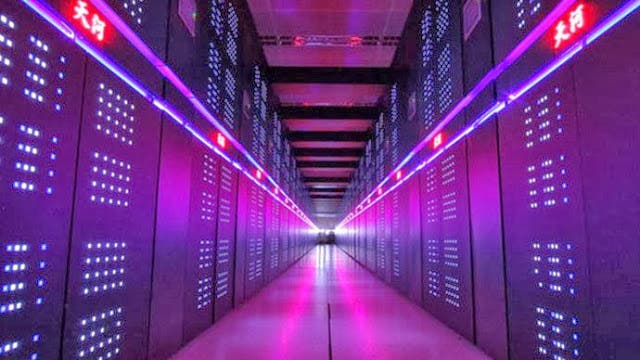The US Department of Energy (DoE) has sealed a deal with Intel worth $200 million to build what’s supposed to be the world’s most powerful computer in 2018: the Aurora. The behemoth will be based on a next-generation Cray supercomputer, code-named “Shasta,” and will use Intel’s HPC scalable system framework. Aurora will likely reach a peak performance of 180 petaflop/s, or 180 quadrillion floating point operations per second (completed algorithm action, not just instruction). For comparison, a 2.5 GHz processor has a theoretical performance of 10 billion FLOPS.
According to the DoE, Aurora will be open to use by any scientific effort. Mainly it will serve in:
- Materials science: Designing new classes of materials that will lead to more powerful, efficient and durable batteries and solar panels.
- Biological science: Gaining the ability to understand the capabilities and vulnerabilities of organisms that can result in improved biofuels and more effective disease control.
- Transportation efficiency: Collaborating with industry to improve transportation systems with enhanced aerodynamics features, as well as enable production of better, more highly-efficient and quieter engines.
- Renewable energy: Engineering wind turbine design and placement to greatly improve efficiency and reduce noise.
The crown supercomputer spot is held by Tianhe-2, a supercomputer developed by China’s National University of Defense Technology, with a peak performance of 55 petaflop/s and a Rmax performance of 33.86 petaflop/s. Coincidentally or not, the news of Aurora broke in the same day as the Feds announced they refused to grant Intel a licence to supply Xeon chips for Tianhe-2. The reason was that the Chinese supercomputer is used to develop nuclear weapons.










